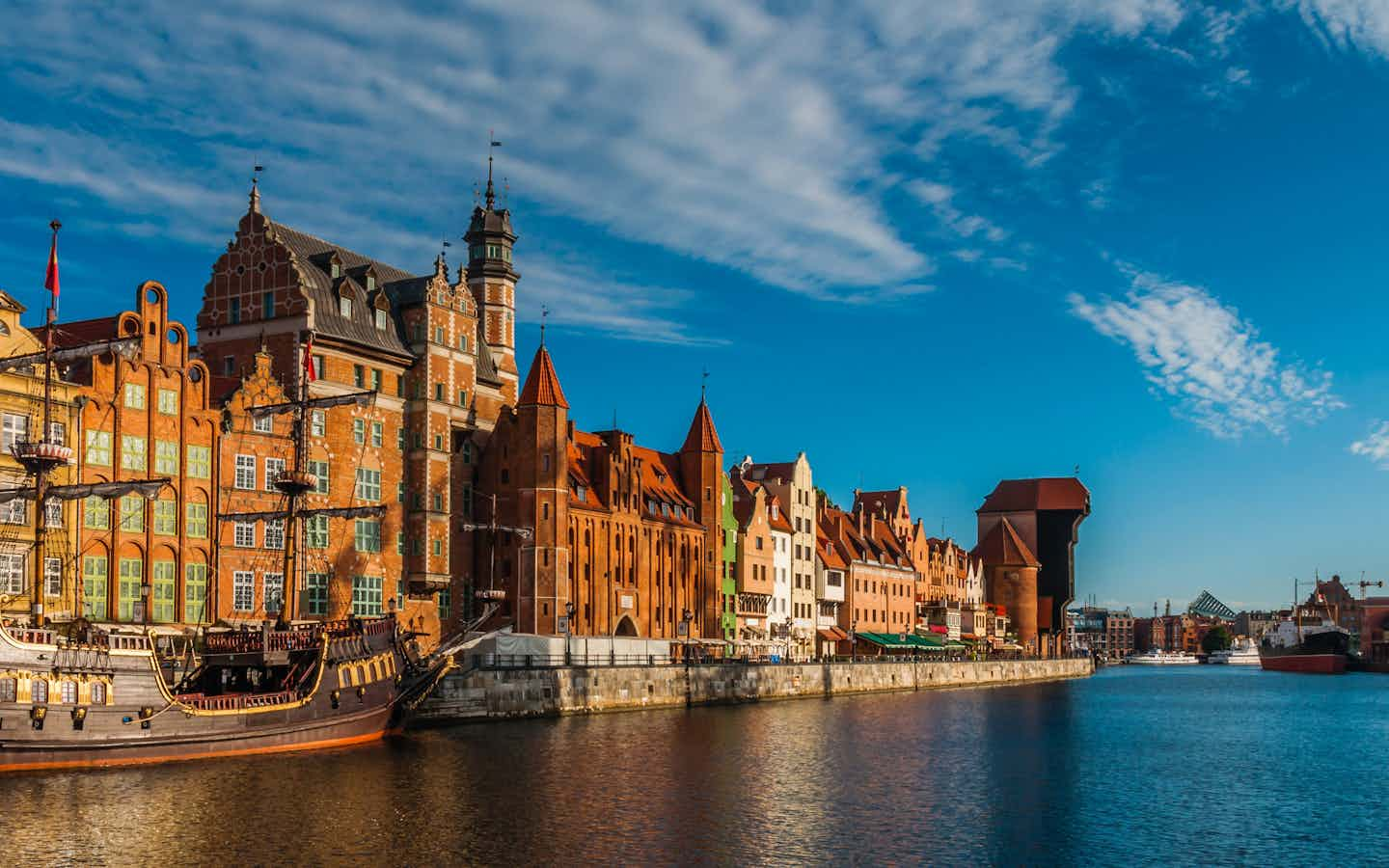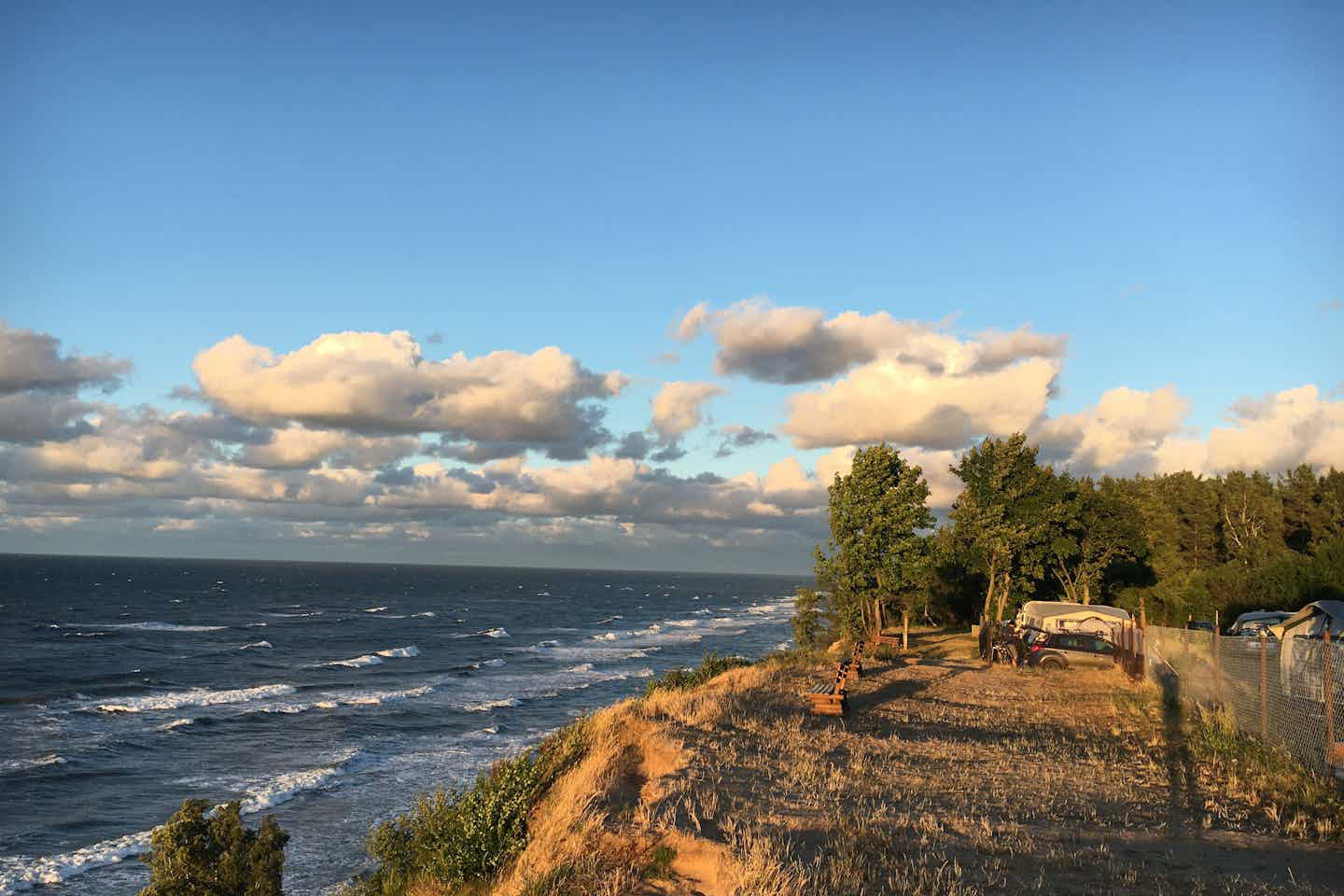Camping Alexa
Poland / Pomerania
Excellent(19Ratings)

-
-
From the beautiful Baltic Sea coast in the north to the Czech border in the south, Poland offers a wide range of holiday regions for a camping holiday. The Polish side of the island of Usedom, the seaside resorts of Kolberg or Gdynia are ideal for a beach holiday. There are also numerous water sports options at the campsites on the Masurian Lake District. Culture vultures and night owls can book a pitch near the capital city of Warsaw or Krakow.
14,400+ campsites
all around Europe196,700+ reviews
from real campers15 million users
on the PiNCAMP sites5.800+ campsites
with trusted ADAC classification
| Number of campsites | 141 |
|---|---|
| Campsite reviews | 366 |
| Ø-ratings | 3.6 |
Poland is characterised by its diverse natural landscapes, which make camping with the family on the dream beaches of the Baltic Sea or on one of the numerous lakes an unforgettable experience. Those travelling with a dog will discover the vast forests of Kashubian Switzerland and Masuria. The mountainous hinterland of the Sudetes or Carpathians is ideal for hiking tours, while the impressive cities from Krakow to Gdansk offer historical sights.
Holidaymakers will find numerous campsites with bathing facilities for the whole family in the north-west on the Baltic Sea coast, which stretches from the Pomeranian to the Bay of Gdansk and is characterised by picturesque spots between dunes and inland waters. Anyone who wants to enjoy water sports such as sailing, surfing or fishing can camp on one of the four large lake districts inland, such as the Wielkopolska Lake District. In addition to the element of water, the green meadows and forests in the more than 20 national parks with their extraordinary flora and fauna are also a delight. Hiking enthusiasts who want to set off from the campsite on tours into the Polish mountains are drawn to the Holy Cross Mountains, for example. In the Lesser Poland Voivodeship, visitors can hike in the high mountains, the Tatra Mountains, or even enjoy skiing and winter camping.
Whether camping in the midst of nature, offers for nudists or for winter holidaymakers - the campsites in Poland offer variety and plenty of comfort.
If you want to be completely at one with nature, travel to the Podlaskie Voivodeship, for example. Here, camping holidaymakers spend the night in the middle of a fabulous landscape that is home to the last primeval forest in Central Europe. Impressive plant species and animals, such as moose, brown bears and wolves, are typical of this region. The campsites in southern Małopolska are also favoured by nature lovers. Five national parks and the highest mountains in the country are located here.
There are several campsites in Poland where dogs are welcome. Some of these are characterised by special features such as dog showers and separate exercise areas. Dense forests and picturesque shores, for example around the Kashubian Lake District, make four-legged friends and their masters happy.
Holidaymakers can enjoy winter camping in the snow, for example in the Szczyrk Mountain Resort ski resort or in Zakopane. The Silesian Beskids near Wisla or Szczyrk promise snow-sure pistes for beginners and pros right through to March. As the mountains are barely higher than 1,300 metres, the mostly flat and short slopes offer skiing fun for the whole family.
Holidaymakers travel around 700 km from Hamburg to the Polish border. From Munich in Bavaria, it is almost 1,000 kilometres to the destination. From Berlin, the journey to Gdansk in the north of Poland is around 500 km; to Krakow in the south, it is a little longer at around 600 km.
Coming from the German capital, the route to Warsaw is initially on the A 100 motorway towards Dresden/Neukölln/Schönefeld Airport. Then take the exit onto the A12 towards Warsaw/Warszawa. After about 100 kilometres, you will reach the border with Poland near Frankfurt (Oder). From there, continue on the A2 to Warsaw or on the A2 and A1 to Gdansk or Krakow.
Different traffic regulations apply in Poland. For example, dipped headlights must also be switched on during the day. In addition, motorhomes and caravans with a gross vehicle weight of over 3.5 tonnes must pay a toll for motorways, expressways and trunk roads. This ticket must be visibly affixed to the windscreen of the vehicle.
The cultural cities of Gdansk and Krakow near the national parks or in front of the impressive mountain panorama of the Polish Tatra Mountains combine culture and nature in the country in a way that is well worth seeing.
Once the most powerful city in the eastern Baltic region, Gdansk has lost none of its elegance and charm. The oldest part of the city, the Rechtstadt, is lined with magnificent burgher and merchant houses that were faithfully rebuilt after the Second World War. The place that made world history is also well worth a visit: the former Lenin shipyard.
The Polish metropolis of Krakow is picturesquely situated in front of the Jura and Carpathian mountain ranges. Its undisputed landmark is the royal castle, the Wawel. Another attraction for holidaymakers are the more than 28 museums and 200 cellar pubs. The city is also almost unique due to its completely preserved building fabric from the Romanesque period to European Art Nouveau. The Jewish quarter of Kazimierz with its many synagogues is also a highlight.
The Polish Tatra mountain range on the Slovakian border forms the highest point of the Carpathian Mountains, an Eldorado for hikers and mountaineers. The High Tatras culminate in the Meeraugspitze at an altitude of almost 2,500 metres, surrounded by numerous cirque lakes from the last ice age, stalactite caves and rushing waterfalls. The idyllic area in the Tatra National Park can be explored on more than 300 kilometres of marked hiking trails.
Families, culture vultures and water lovers enjoy a varied camping holiday on islands, near towns and lakes in Poland.
A family-friendly camping holiday is wonderful on the four large lake districts. In addition, the long sandy beaches on the Baltic Sea coast are a particular guarantee of fun and frolicsome bathing in Poland. Islands such as Wolin and Usedom are also popular holiday destinations.
If you are looking for a relaxing holiday with art and culture, visit the impressive cities of Gdansk, Krakow and Warsaw. Wielkopolska around Poznan is also ideal for culture vultures on a camping holiday, as it is the most historic part of the country and is home to fascinating settlements dating back to the Bronze Age.
The Bay of Gdansk in Pomerania offers an excellent area for surfers, divers and sailors in addition to the four large lake districts. If you want, you can cross over to the Hel Peninsula during your camping holiday. The kayak route through the Drawa river valley in the Drawienski National Park is certainly varied and fun for nature-loving water rats. Beavers and otters can be seen on the paddling tour.
Along the Baltic coast in the north and west of Poland, holidaymakers experience humid and moderately warm summers and not too cold winters with increased precipitation. In the east and south, the summer months are drier and hotter, while winters are colder and snowy. Campers planning a beach holiday should preferably choose July as the warmest month to visit. On particularly fine days, temperatures rise to around 25 degrees Celsius. The bathing season runs from June to September.
January is the coldest month with temperatures around -6 degrees Celsius. In the mountainous regions, the thermometer sometimes shows temperatures in the double-digit minus range. Winter sports enthusiasts can expect plenty of snow from December to March.